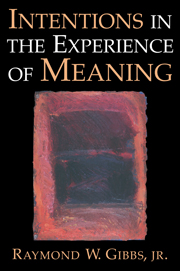Chapter 1 - THE CONTROVERSY OVER INTENTIONS
Published online by Cambridge University Press: 05 June 2012
Summary
Our intentions to say or perform certain acts appear to have an intimate relationship with how people interpret what we are doing. Suppose I ask a good friend Have you seen the latest Woody Allen movie? I may have a whole range of intentions and goals that motivate my asking this particular question. For instance, I may intend to engage my friend in a discussion about the movie, I may want to use this utterance as a way of inviting my friend to see the movie with me, I may want to use this question to accuse my friend of not being up on the contemporary movie scene, and so on. But do any of these various intentions play a role in my friend's interpretation of my question?
My friend might simply interpret the meaning of my question about the latest Woody Allen movie not by assessing anything about my specific communicative intentions. She might, instead, determine what my question means from a linguistic analysis of the words in my utterance in combination with her knowledge of English grammar. Perhaps my friend will use her understanding of the context in which I uttered my question to determine its meaning, again, without trying to read my mind as to the intentions behind my question.
- Type
- Chapter
- Information
- Intentions in the Experience of Meaning , pp. 3 - 18Publisher: Cambridge University PressPrint publication year: 1999



